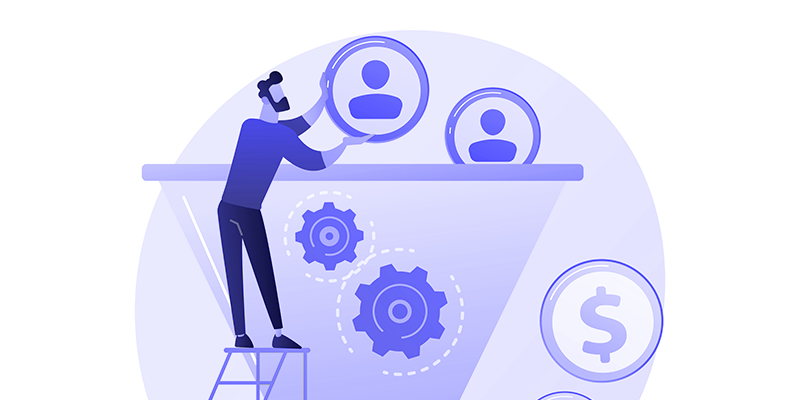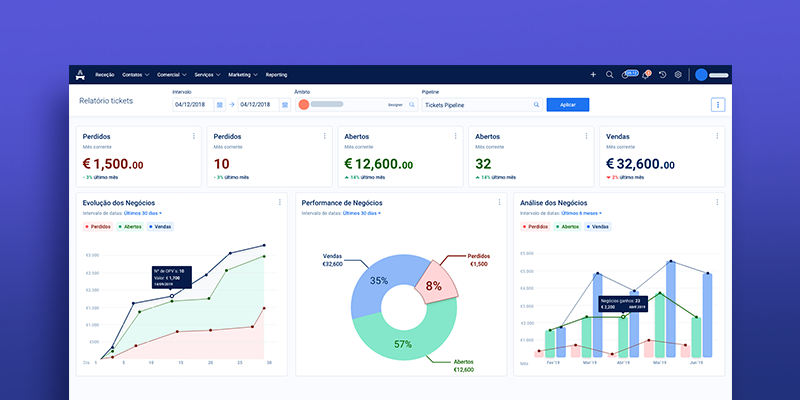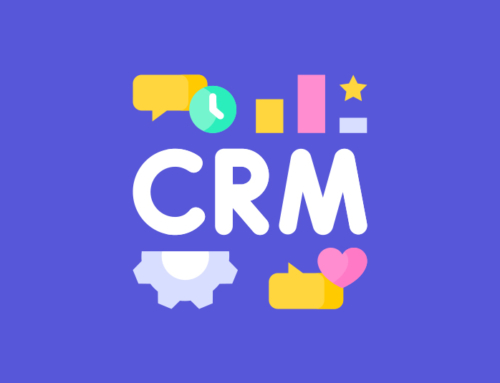If you are in the Marketing or Sales area, this term isn’t new to you. In fact, increasing the efficiency of the sales funnel is among the main priorities of a sales team.
However, despite the importance of the role of this sales strategy, more than 60% of the companies have not identified or tried to measure a sales funnel and 79% of marketing leads are not converted into clients.

But, ultimately, what is a Sales Funnel?
Sales funnel refers to the process that helps sellers turn potential customers into leads. It’s a theoretical process that the customer must follow until the purchase of a product/service. As in a traditional funnel, the sales funnel starts with a wider size and decreases until it reaches real consumers or clients, in a narrower form. In order to understand the consumer’s position in relation to the purchase decision, the sales funnel is segmented in stages, so that the company can assist the customer, with the information and content he needs at the ideal time. In general, the sales funnel is divided into three stages: top, middle, and bottom. This strategic consumption model is derived from the AIDA model, a methodology created by Elias Elmo Lewis, around 1898, to guide sales professionals. Lewis’ original structure showed the importance of attracting attention, maintaining interest, and creating the customer’s desire before taking him to the purchase decision. Years later, a fourth element was added to Lewis’ method: action, i.e., the sale. Only after several adaptations did the concept of the sales funnel, as we know it today, emerged.
What are the main benefits of the sales funnel?
Mastering the management of a sales funnel is one of the most effective ways to increase revenue because it helps to find and improve the weak points of any sales team. It’s widely used in complex sales, that is, those that demand many steps and a long decision period. Through the sales funnel, sales executives can:
- Receive the leads generated by the marketing team.
- Organize information about leads generated through prospecting/outbound.
- Manage opportunities and follow their evolution through the stages of the sales process.
- Create follow-up routines to improve productivity.
- Obtain indicators such as Conversion Rate, Average Ticket, Cycle Time, among others.
Discover these 5 useful tips to optimize your sales funnel results.

1. Know your audience
The first step to creating a good sales funnel is to know your audience. So, get as close as possible to them and to their reality. The goal is to gather as much information as possible so that you can better understand your buyers. You can prepare questions and talk with your customers, to define the ideal customer profile, with the doubts, desires, hobbies, problems, among other personal features and tastes.
2. Conduct regular sales funnel evaluations
The dynamics of the sales funnel is in constant transformation, so sales teams need to constantly evaluate these changes. Teams should weekly evaluate each step of the funnel to re-evaluate their strategies. One of the key points is the number of opportunities open, capable of increasing the speed of the funnel and, consequently, raising the success rate. Once well defined, the sales funnel can be scaled quite easily.
3. Focus on small improvements in each step of the funnel
It’s useless to focus only on sales opportunities because each step of the funnel has its importance to accelerate results. In fact, focusing only on opportunities can be detrimental to your results. On the contrary, small phase-to-phase improvements in the sales funnel can lead to promising results. Think of the sales funnel as a domino effect, in which each small improvement, however insignificant it may seem, maximizes the impact in the next phases. Thus, an increase in the conversion rate of 10% in one stage, may result in a 50% increase in the number of deals closed.
4. Know your numbers
If sales managers know their metrics, they will be able to better predict and create the revenue forecast. These are some examples of what you should know:
- The conversion rate of leads into opportunities.
- The total number of open opportunities. The conversion rate of leads into closed deals.
- New leads created per month, per seller.
- The average length of the sales cycle.
- Ranking of each sale.
The more detailed the data, the better! When the data is solid, previous trends will help predict future results and re-evaluate possible errors.
5. Use the right tool to manage your sales funnel
The deal management module is one of the most useful features of Airdesk, a centralized workspace for all your services. The goal of this module is to manage any type of deal. Airdesk’s platform has a CMR that helps you manage all the accounts of customers, potential customers, partners, suppliers, in a centralized view.
Airdesk helps you to answer the following questions:
- How many deals were closed this month?
- How much does the customer still have to pay?
- What is the status of the business?
- What were the last deals requested by the customer?
- What is delaying the dispatch of the proposal?
- How long ago was the proposal sent to the client?
- Among others.
Airdesk allows you to create pipelines to organize your routines and give you more control over your company and opportunities.
The creation of pipelines allows users to:
- Get an overview of current sales opportunities.
- Know the value of each sales opportunity.
- Track sales opportunities that are taking time to materialize.
- Know the average time of the sales cycle and each step of the process.
- Manage the sales team effectively.
- Standardize procedures.
- Predict sales for different periods based on ongoing opportunities.
Create a free Airdesk account or contact our support team to learn more about how Airdesk can help companies sell more and better.










